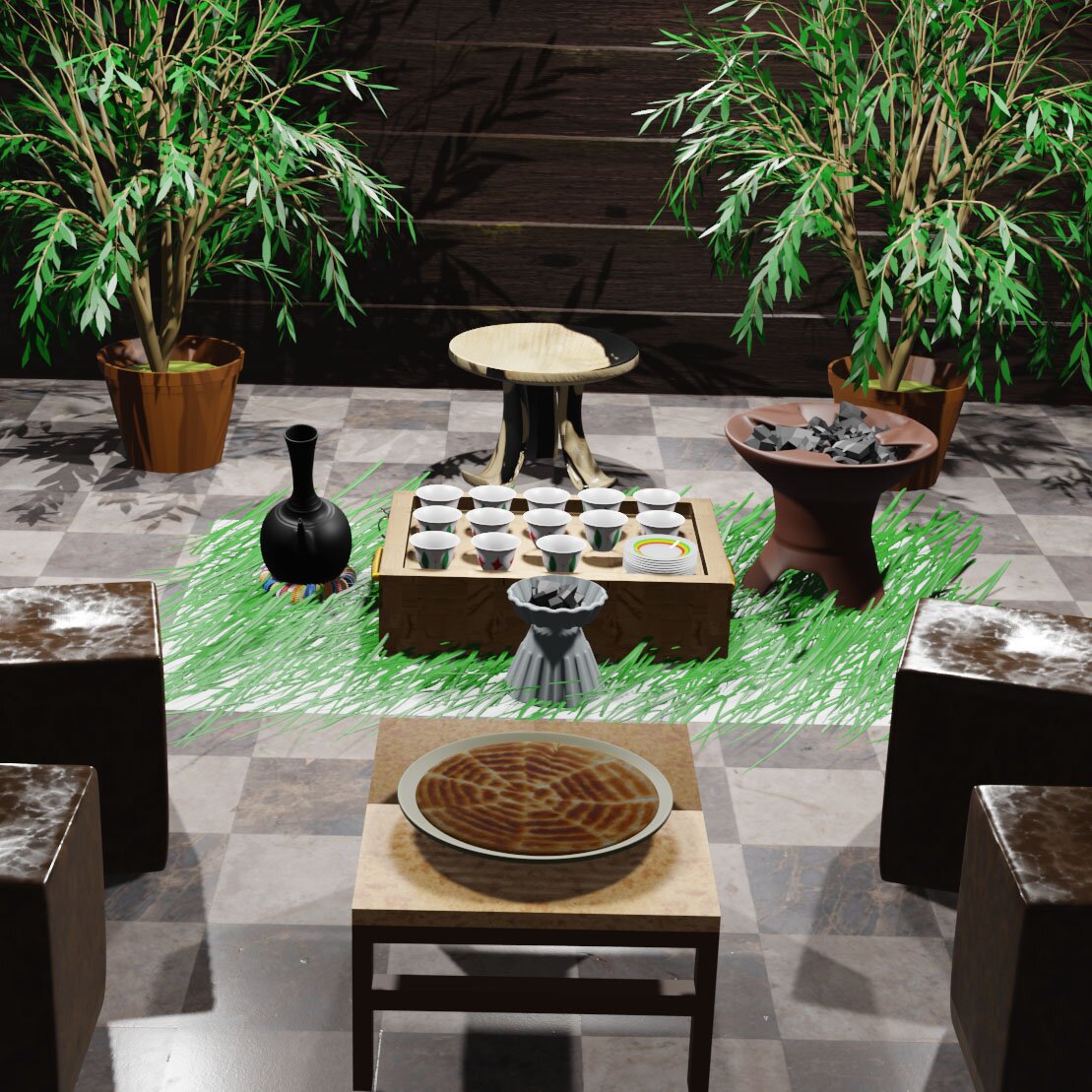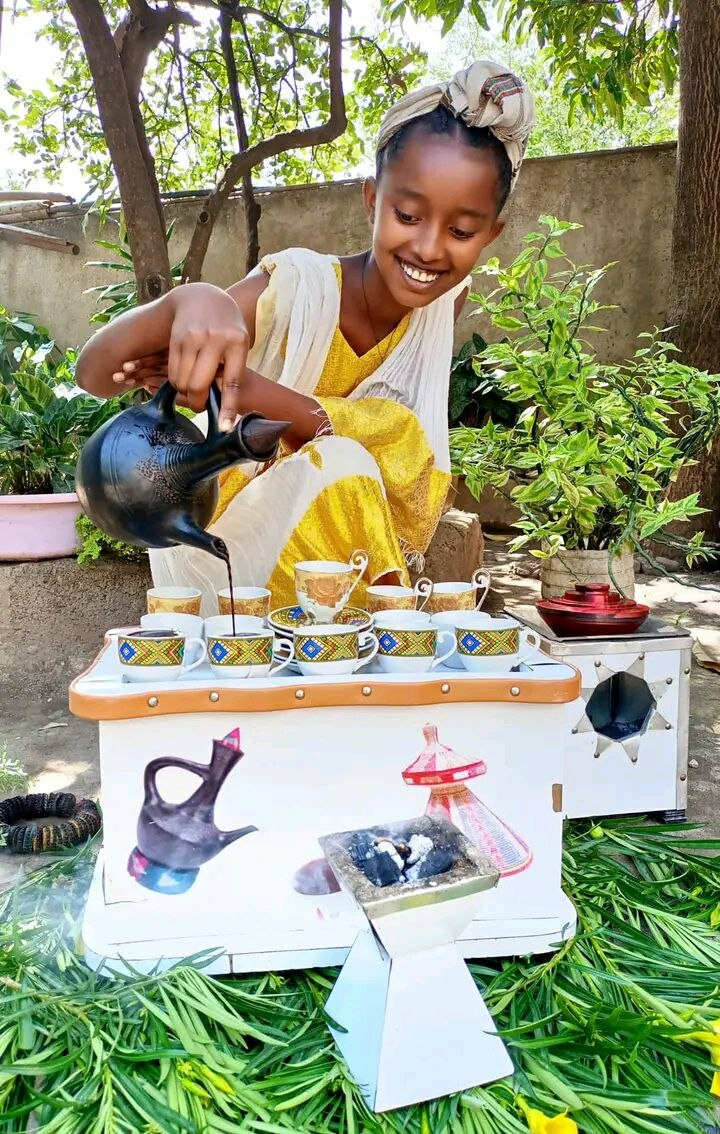

 (ማስታወቂያ)
(ማስታወቂያ)

Ethiopia, a country that relies on coffee to earn the majority of its export income (32.1%, according to www.worldstopexports.com ) is also the country where the place associated with the name and origin of coffee is situated in. This specific place is known as Kaffa, and it is located in southwestern Ethiopia. You can read more about this in our blog titled 8 Interesting Facts about Ethiopia. But the special bond between Ethiopia and coffee is not well explained just by looking at these two cases. I believe to best understand this special bond between the Ethiopian people and coffee, one also needs to know the Ethiopian coffee drinking ceremony. This ceremony is a social event unlike anything you have probably ever seen, and this is because of four main reasons that I will explain to you below.

The first of these reasons is that it is a social gathering event that brings neighbors together. Regardless of your ethnic, religious, economic, or any other background, for the coffee drinking ceremony, everybody gets together and drinks coffee, while discussing any available topic. It is usually the housewives and the elderly that take part in the whole event as the husband usually will be off to work. The hosting responsibility of the ceremony rotates and is given to each household in their own turn, making it fair and feasible.

When it is time to drink coffee, someone is sent to call the neighbors; this is usually the children’s responsibility. They go around screaming people’s names and yelling “Nu buna tetu” (ኑ ቡና ጠጡ!) which means “Come, drink coffee”. The second reason I believe this ceremony is a social event unlike anything you have probably seen is that it happens in three stages. Ethiopians make and drink coffee in three consecutive stages and each stage has a name too. The first one is called Abol (አቦል), and it is followed by Toona (ቱና), AND Bereka (በረካ) respectively. Snack is also served with the coffee; this snack is known as Buna-kurs (ቡና ቁርስ) , translates to Coffee-snack, this is because in the Ethiopian culture we don’t serve our guests with only beverages, GUESTS HAVE TO EAT SOMETHING.

This snack could vary depending on the economic level of the hosting household and if it is a holiday or not. But the usual snacks are bread, tortilla (could be topped with a mix of butter and chili powder), roasted grain, Enjera with chili powder, popcorn, etc. . . . With every phase, the strength of the coffee keeps declining as new water is added to the mix and it is boiled marking the beginning of the next phase. The whole ceremony could take as long as one to two hours, because of this it is common for some housewives to bring their time-consuming household work to the venue. Some of these tasks include cotton threading, Lentils picking, etc. . . . . Where I am from they do Moringa leaf sorting, as it is a typical food here. The third reason why I say this ceremony is unique is that it happens every day. Not only that, but IT ALSO HAPPENS MULTIPLE TIMES A DAY. Coffee ceremony could sometimes be done with every meal of the day. The final reason for me to say the Ethiopian coffee drinking ceremony is unique is because it has its own coffee-making tools for every process needed to prepare the beverage. From roasting the beans to grounding them and the serving the liquid coffee; Let’s look at the process of making coffee the Ethiopian way with the utensils used throughout;
This is the part where coffee is roasted either in the presence of the guests or before they come. If it is done in the presence of the guests, the roasted coffee beans are brought to them while still smoking so they can inhale the aroma. This is because people, including those that don’t drink coffee, love the smell of freshly roasted coffee beans.
To roast coffee Ethiopians use either of 2 pans, the first and more preferable one is a pan that is perforated at the bottom and has a handle. To roast coffee using this pan, it must be shaken frequently so that the coffee beans will roast evenly. This is preferable because it is faster and saves energy.

The second, and older, type of pan is just a circular metal. A stirring stick had to be used to roast the beans on this pan.
After roasting the beans what follows is grinding them. For this stage, Ethiopians use tools that are very similar to mortar and pestle, except in this case the pressing is not used to crush the beans but hitting. Mortar and pestle in Amharic is “Muqecha ena Zenezena” (ሙቀጫ እና ዘነዘና)!

But if you want to buy coffee powder, follow this affiliate link...
Coffee serving has its own decoration which makes the essence of the Ethiopian coffee drinking ceremony. The coffee is boiled in a traditional terracotta kettle known as “Jebena” (ጀበና), which is basically roundish in design. Because of this, it is put on a circular base called Matot (ማቶት) to give it stability.

Matot can be made of either beer corks, rope, wood, or other simple materials. After the coffee is done boiling the terracotta kettle is then put on the Matot to let the coffee settle before pouring it. After it is settled the coffee is then poured into tiny cups called Sini “ሲኒ”, which can hold up to 80ml of coffee. Typically the coffee cups (Sini) are put on a box-like platform known as Rokobot (ሮኮቦት) arranged in rows. At the front of the Rokobot, there is always an incense burner. The incense burner in Amharic is called “Etan machesha” (እጣን ማጨሻ). The ground around the Rokobot is usually sprinkled with green grass. The general setup of the coffee ceremony is shown in the photo below.

This coffee ceremony is so engrained in the lives of Ethiopians that coffee drinking spots that are located in the shades of trees, buildings, and other structures throughout towns of the country try to imitate its basic design to create the feeling of friendliness and belongingness in the minds of their customers. That’s all I can tell you about the Ethiopian coffee drinking ceremony! Let me know in the comments if there is anything I’ve missed! Thanks for reading and please share this blog if you enjoyed it . . . ❤❤❤